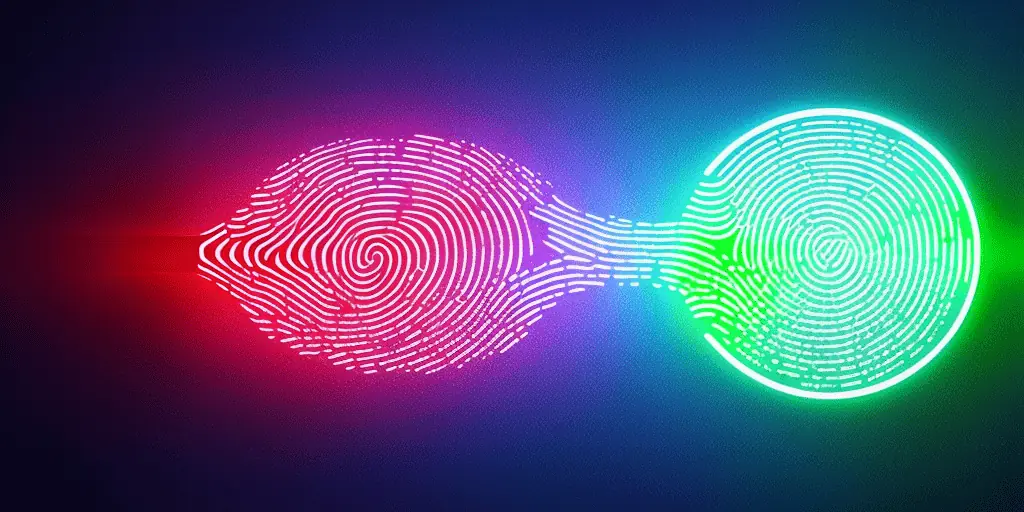Fingerprint scanners have become an integral part of our daily lives, from unlocking our smartphones to accessing secure facilities. But have you ever wondered how these scanners actually work? How do they accurately identify and verify the unique patterns and ridges on our fingertips?
In this article, we will delve into the fascinating world of fingerprint scanners, exploring the technology behind them and how they are able to capture and analyze our unique fingerprints to provide efficient and secure identification.
Whether you are curious about the science behind this modern marvel or interested in understanding the mechanisms that enable these scanners to work smoothly, read on to discover the intricacies of how fingerprint scanners actually work.
What is a Fingerprint Scanner?
A fingerprint scanner is a biometric technology that uses fingerprint identification to verify the identity of an individual. It works by capturing an image of a fingerprint and analyzing the unique patterns formed by ridges and valleys. This information is then compared to a database of pre-registered fingerprints to determine if there is a match.
How do fingerprint scanners work?
Fingerprint scanners work by capturing an individual’s unique fingerprint pattern and converting it into a digital format that can be compared with stored fingerprint data. The process generally involves the following steps:
1. Image Capture: The scanner uses either optical or capacitive sensors to capture an image of the fingerprint. Optical scanners use light to illuminate the fingerprint, while capacitive scanners use an electrical current.
2. Ridge Detection: Once the image is captured, software algorithms analyze the image to identify the ridges and furrows of the fingerprint. The ridges form unique patterns that can be used for identification.
3. Minutiae Extraction: The scanner then extracts specific points on the fingerprint known as minutiae. Minutiae can include ridge endings, bifurcations, and other ridge characteristics. These minutiae are converted into a mathematical representation that forms a unique fingerprint template.
4. Template Matching: The fingerprint template extracted from the scanned fingerprint is compared against existing templates stored in the system’s database. If a match is found, the person is authenticated; otherwise, the authentication is denied.
5. Authentication and Decryption: If the scanned fingerprint matches an existing template, the system verifies the individual’s identity and grants access to the authorized resources. In certain cases, the stored fingerprint data may be encrypted to ensure privacy and security.
Overall, fingerprint scanners rely on the distinct patterns and unique details of an individual’s fingerprint to authenticate their identity.
Types of Fingerprint Scanners
There are several types of fingerprint scanners available today, each with its own set of advantages and limitations. The two most common types are optical and capacitive scanners.
1. Optical Fingerprint Scanners
How Does an Optical Scanner Work?
An optical fingerprint scanner works by shining a bright light over your fingerprint and taking a digital image of it. It uses a charged coupled device (CCD) or a complementary metal-oxide-semiconductor (CMOS) sensor to capture the fingerprint image. The image is then processed using algorithms to extract the unique features of the fingerprint, such as the ridge patterns and minutiae points.
Advantages of Optical Scanners
One of the main advantages of optical scanners is their affordability. They are relatively inexpensive to manufacture, making them a cost-effective option for many applications. Optical scanners are also resistant to scratches and dust, which ensures reliable performance over time. Additionally, they can capture high-resolution images, making it easier to extract detailed biometric data for accurate identification.
Limitations of Optical Scanners
However, optical scanners have some limitations. Since they rely on capturing an image of the fingerprint, they may be susceptible to spoofing attacks using fake fingerprints or images. They also require direct contact with the finger, which can be a drawback in situations where hygiene is a concern. The performance of optical scanners can also be affected by external factors such as bright light or moisture on the finger.
2. Capacitive Fingerprint Scanners
How Does a Capacitive Scanner Work?
Capacitive fingerprint scanners work by measuring the electrical capacitance of the skin. When a finger is placed on the scanner, a small electrical charge is applied to the surface. The ridges and valleys of the fingerprint create variations in the capacitance, which are captured by an array of tiny capacitors beneath the sensor. These variations are then converted into a digital image for further processing and comparison.
Advantages of Capacitive Scanners
Capacitive scanners offer several advantages over optical scanners. Firstly, they provide a higher level of security and accuracy as they measure the unique electrical characteristics of the ridges and valleys. They are also more resistant to spoofing attacks, as they require the presence of a live finger with electrical conductivity. Capacitive scanners are generally faster than optical scanners and can capture a fingerprint image in a matter of milliseconds.
Limitations of Capacitive Scanners
Despite their advantages, capacitive scanners have their limitations. They are more expensive to manufacture compared to optical scanners, which can make them less accessible for certain applications. Capacitive scanners also require better finger placement accuracy, as any misalignment can affect the quality of the fingerprint image. Additionally, they may struggle to capture the fingerprints of individuals with dry or worn-out skin, resulting in a higher false rejection rate.
3. Ultrasonic Fingerprint Scanners
How Does an Ultrasonic Scanner Work?
Ultrasonic fingerprint scanners utilize sound waves to capture a detailed 3D image of the fingerprint. When a finger is placed on the scanner, ultrasonic waves are emitted and bounce off the ridges and valleys of the fingerprint. The sensor measures the time it takes for the waves to return, creating a precise 3D representation of the fingerprint.
Advantages of Ultrasonic Scanners
Ultrasonic scanners offer several advantages over optical and capacitive scanners. They can capture a highly detailed 3D image of the fingerprint, which provides a higher level of accuracy and security. These scanners are also more resistant to spoofing attacks as they can detect the internal structure of the finger, making it difficult to replicate using artificial means. Ultrasonic scanners can also work reliably even with wet or dirty fingers, overcoming some of the limitations of other scanner types.
Limitations of Ultrasonic Scanners
One limitation of ultrasonic scanners is their higher cost compared to other types of scanners. The technology used in ultrasonic scanners is more complex and requires sophisticated sensors and processing algorithms. Additionally, ultrasonic scanners may have slower response times compared to optical and capacitive scanners, which can affect their usability in high-volume applications.
In-Display Fingerprint Scanners
Overview of In-Display Scanners
In-display fingerprint scanners, also known as under-display scanners, are a relatively new development in biometric technology. Instead of having a separate sensor, these scanners are integrated into the display of a device, such as a smartphone or tablet.
How Do In-Display Scanners Work?
In-display scanners use optical or ultrasonic technology to capture the fingerprint. In the case of optical in-display scanners, the display panel is made partially transparent, allowing light to pass through. The scanner captures the fingerprint image when the finger touches the illuminated area of the display. Ultrasonic in-display scanners work similarly to regular ultrasonic scanners, but the sensor is placed beneath the display instead of a separate area.
Advantages of Ultrasonic Scanners
Ultrasonic scanners have several advantages over other scanning techniques. One main advantage is that they can be used in various applications, such as medical imaging and flaw detection in materials. They are also non-invasive and do not involve exposure to harmful radiation, making them safe for both patients and operators. Additionally, ultrasonic scanners provide real-time imaging and can capture detailed images of internal structures with high resolution. This makes them an effective tool for diagnosing and monitoring health conditions or identifying defects in industrial materials.
Limitations of Ultrasonic Scanners
Ultrasonic scanners, despite their many advantages, also have certain limitations. One major limitation is that they can only provide accurate results for a limited range of depths. The quality of the images produced by ultrasonic scanners also decreases as the depth increases. Moreover, ultrasonic scanners may not be suitable for scanning certain areas of the body that are difficult to access. These limitations restrict the application of ultrasonic scanners and necessitate the use of alternative imaging techniques in some cases.

Cryptography and Secure Processing
Importance of Cryptography
Cryptography plays a crucial role in ensuring the security of fingerprint scanner systems. It involves the encryption and decryption of the biometric data to protect it from unauthorized access. Fingerprint data is sensitive personal information and needs to be protected against potential threats.
Secure Processing in Fingerprint Scanners
Fingerprint scanners employ various secure processing techniques to ensure the integrity and privacy of the biometric data. These techniques include encryption of the data at rest and in transit, secure storage of the data on the device, and secure authentication protocols. Additionally, some scanners incorporate liveness detection algorithms to prevent spoofing attacks.
Implications and Future Developments
The use of fingerprint scanners has significant implications for various industries. It has revolutionized personal device security, enabling individuals to use their fingerprints as a password for authentication. Fingerprint scanners are also increasingly used in access control systems for buildings and secure areas. In the future, we can expect further developments in fingerprint scanner technology, such as improved accuracy, faster response times, and enhanced resistance to spoofing attacks. The widespread adoption of fingerprint scanners is likely to continue, contributing to enhanced security and convenience in various aspects of our lives.
Conclusion
Fingerprint scanners are widely used for biometric security and authentication purposes. They work by capturing an image of a fingerprint and analyzing the unique patterns formed by ridges and valleys.
The three most common types of fingerprint scanners are optical, capacitive, and ultrasonic scanners, each with its own set of advantages and limitations. In-display scanners are a newer development that integrates the scanner into the display of a device.
Cryptography and secure processing techniques are essential to ensuring the security of the biometric data.
With continued advancements in technology, fingerprint scanners are expected to become even more reliable and secure in the future.
FAQs
Q: How do fingerprint scanners work?
A: Fingerprint scanners work by capturing an image of a person’s fingerprint and analyzing it to identify unique patterns and ridges. This process is achieved through the use of various technologies such as optical and capacitive scanners.
Q: How do biometric systems use fingerprint scanners?
A: Biometric systems use fingerprint scanners to compare a person’s fingerprint with a previously recorded fingerprint. The scanner captures the fingerprint image, which is then compared to the stored fingerprint using various algorithms to determine a match.
Q: What technologies are commonly used in fingerprint scanners today?
A: The most common fingerprint scanners used today are optical scanners. These scanners utilize light-sensitive optical devices and CMOS image sensors to capture and analyze fingerprint images. Capacitive scanners are also commonly used and rely on the electrical conductivity of ridges and valleys.
Q: What components are involved in a fingerprint scanning system?
A: A fingerprint scanning system typically includes a fingerprint sensor, such as an optical or capacitive scanner, along with supporting components such as semiconductors, analog-to-digital converters, and integrator circuits. These components work together to capture and analyze the fingerprint image.
Q: What does a fingerprint scanner measure?
A: A fingerprint scanner measures the unique pattern of ridges and valleys on a person’s finger. It captures and analyzes the details of the fingerprint to create a digital representation that can be compared to other fingerprints.
Q: How are fingerprint scanners used in everyday life?
A: Fingerprint scanners are used in various applications for identity verification and access control. They can be found in smartphones, laptops, security systems, and even in some payment systems. Fingerprint scanners provide a convenient and secure method of authentication.

